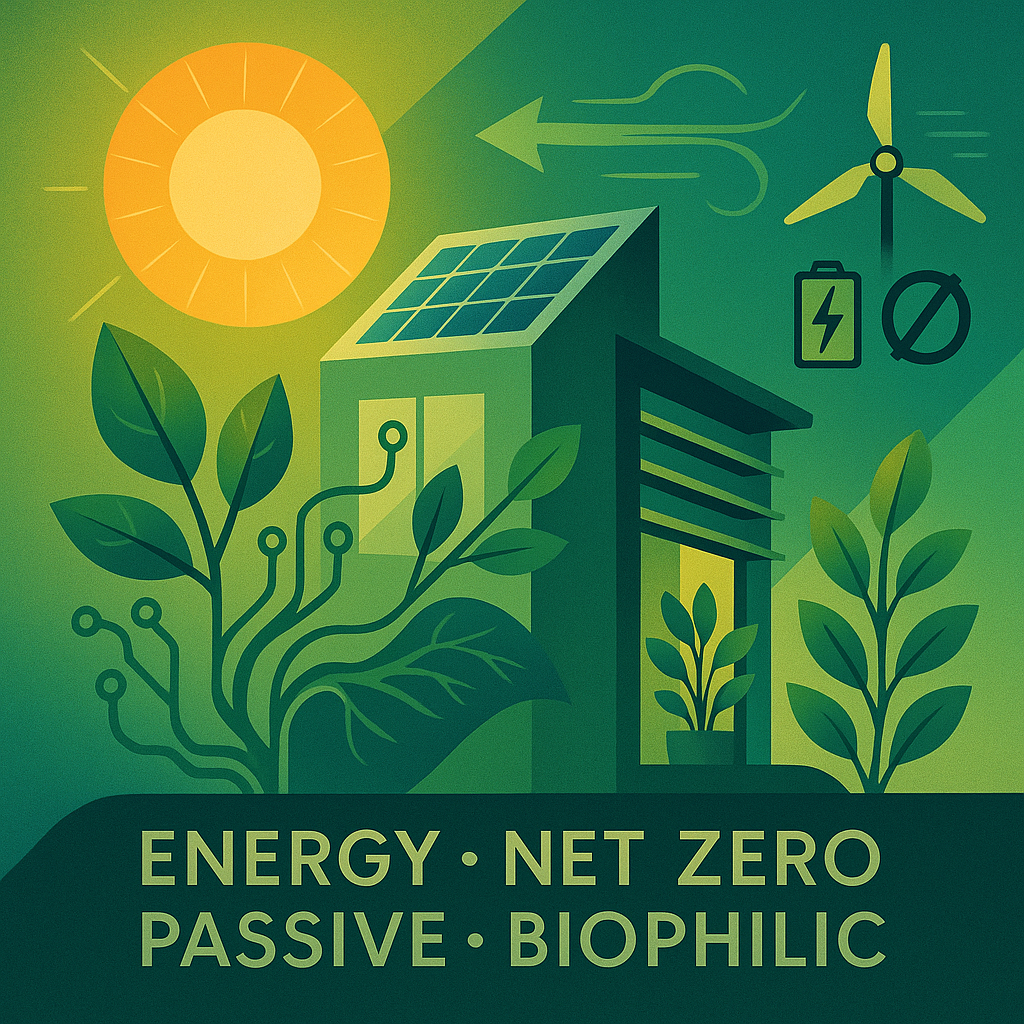Energy-efficiency, net zero, passive design, biophilic design.
🌱 Optimized Introduction
Sustainable and green design is transforming the way we think about architecture and urban development. By focusing on energy efficiency, net zero buildings, passive design strategies, and biophilic design, architects are creating spaces that are environmentally responsible and deeply connected to human wellbeing. This holistic approach to sustainable architecture not only reduces carbon footprints but also fosters healthier, more resilient cities where people and nature can thrive together.

Sustainable & Green Design: Shaping the Future of Architecture
Sustainable and green design has become one of the most influential movements in contemporary architecture. As cities face the challenges of climate change and rapid urbanization, architects are rethinking how buildings are designed, constructed, and maintained. The focus is shifting from short-term efficiency to long-term resilience, creating spaces that minimize environmental impact while enhancing human wellbeing.
Energy-Efficiency and Net Zero Goals
At the core of sustainable design is energy efficiency. Buildings consume nearly 40% of global energy, making efficiency measures essential. Strategies such as high-performance insulation, advanced glazing, and smart energy systems reduce demand while integrating renewable sources like solar and wind. The ultimate ambition is the net zero building—structures that generate as much energy as they consume. These projects are no longer futuristic concepts; they are becoming benchmarks for responsible development.
Passive Design Strategies
Beyond technology, passive design principles emphasize working with natural systems instead of against them. Orienting buildings to capture sunlight in winter, maximizing natural ventilation in summer, and using thermal mass to regulate temperatures are time-tested methods. These approaches reduce reliance on mechanical systems, lowering both costs and carbon footprints.
Biophilic Design and Human Wellbeing
Sustainability also extends to the human experience. Biophilic design connects occupants with nature through natural light, greenery, water features, and organic materials. Studies show that these features reduce stress, improve productivity, and foster stronger connections between people and their environments. By prioritizing wellbeing, biophilic design makes sustainability personal and experiential.
A Holistic Approach
The future of green architecture lies in combining these strategies into holistic solutions. Energy efficiency ensures performance, net zero sets ambitious goals, passive design reduces dependency on resources, and biophilia enhances life quality. Together, they create sustainable spaces that are not only environmentally responsible but also inspiring places to live, work, and gather.
🌍 Conclusion & Call to Action
Sustainable and green design is more than a trend—it’s a responsibility. By combining energy efficiency, net zero goals, passive design strategies, and biophilic principles, architects and planners are shaping spaces that respect the environment while improving human wellbeing.
At DailyArchitectural.com, we’re committed to exploring the ideas, innovations, and case studies that drive sustainable architecture forward.
👉 Want more?
- Explore our guide on City Planning and Public Spaces for a deeper look at how sustainability shapes urban life.
- Discover Landscape Architecture Trends shaping the cities of tomorrow.
- Subscribe to our newsletter for weekly insights on sustainable architecture, urban design, and green innovation.
Together, we can design a future that’s both resilient and inspiring.
